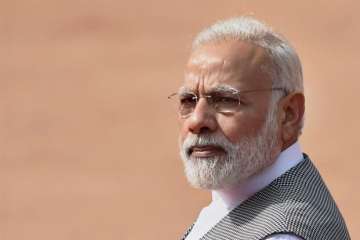Year Ender 2017 News: Top 5 economic reforms unleashed by Modi govt this year
While the impact of the reforms has been mixed, the government believes the structural changes it has brought about have put the Indian economy on a sound track.

It has been a mixed year for the government as far as the Indian economy is concerned. While the government has pushed ahead with reforms that it sees as necessary for the good health of the economy in the long run, the short-term impact of the reforms has also been felt in good measure.
While the government managed to implement the Goods and Services Tax, touted as the single biggest taxation reform in the country, the impact was felt across sectors and translated into the lowest quarterly GDP growth figures under the Narendra Modi government.
On the other hand, the government sees the structural changes as having put the Indian economy on sound track and looks forward to a much cleaner and bigger India economy in the years to come.
As 2017 draws to close, here are some major economic reforms that the Modi govt undertook this year:
Goods and Services Tax
On July 1, the government launched the Goods and Services Tax (GST), which encompasses all the indirect taxes and cesses into one. Chaos followed in the days that followed and the government brought several changes as experience with the new all-encompassing taxation regime grew.
The government said minor hiccups were expected when a country as large as India undertakes a transformation as big as the GST. The GST has replaced more than a dozen central and state taxes or Value Added Tax (VAT) with an aim to create a seamless unified market for the $2 trillion Indian economy.
Dynamic fuel pricing
Starting June this year, India joined the league of select countries like the US and Australia where fuel prices are revised on a daily basis. The three state-owned oil marketing companies (OMCs) -- Indian Oil, Bharat Petroleum Corporation and Hindustan Petroleum Corporation -- are since rolling-out the daily dynamic pricing mechanism for petrol and diesel. Under the dynamic pricing scheme, petrol and diesel prices are revised on a daily basis in sync with global crude oil prices.
Earlier this year, a steep rise in petrol and diesel prices despite crude prices staying relatively low stirred up a row. The government cut back on the central tax marginally and some BJP-ruled state governments also followed suit. There are also demands that petroleum products be brought under GST.
PSU Bank recapitalisation
In October this year, the Finance ministry announced a mega Rs 2.11 lakh crore recapitalisation plan for PSU banks over the next two years. Of the Rs 2.11 lakh crore recapitalisation plan, FM Arun Jaitley said that Rs 1.35 lakh crore would come from recapitalisation bonds, Rs 18,139 crore from the Centre's budgetary funds and the remaining Rs 58,000 crore would be mopped up from capital market by diluting the government's equity.
Capital infusion was long-standing demands of the state-owned banks, as the asset qualities of these banks have grossly worsened due to increasing non-performing assets. The government’s announcement also led to improvements in the country’s sovereign rating.
Air India privatisation
National carrier Air India, which is reeling under a debt of Rs 52,000 crore, will be privatized, the government decided in 2017. Government may take over half the working-capital debt as part of its divestment plan. The airline has a fleet of 105 aircraft. As of March 2017, its assets were worth about Rs 40,000 crore.
A ministerial group headed by finance minister Jaitley has been set up that will decide the demerger and strategic divestment of three profit making subsidiaries, the quantum of disinvestment and the universe of bidders. Of Air India’s total debt of Rs 52,000 crore, Rs 20,000 crore is aircraft-related and Rs 32,000 crore is working-capital based.
Insolvency and Bankruptcy Code
A major reform aimed at cutting down on the long-drawn framework for resolving insolvencies without offering an economically viable arrangement, the Insolvency and Bankruptcy Code 2016 came into effect this year. The code aims to protect the interests of small investors and make the process of doing business a less cumbersome process.
The Code provides for initiation of a formal insolvency resolution process (IRP) for businesses, either by coming up with a viable survival mechanism or by ensuring their speedy liquidation. The IBC has been touted as a landmark reform in the banking sector and provides sweeping powers to the central bank with an aim to accelerate cleaning up of non-performing assets from the system.